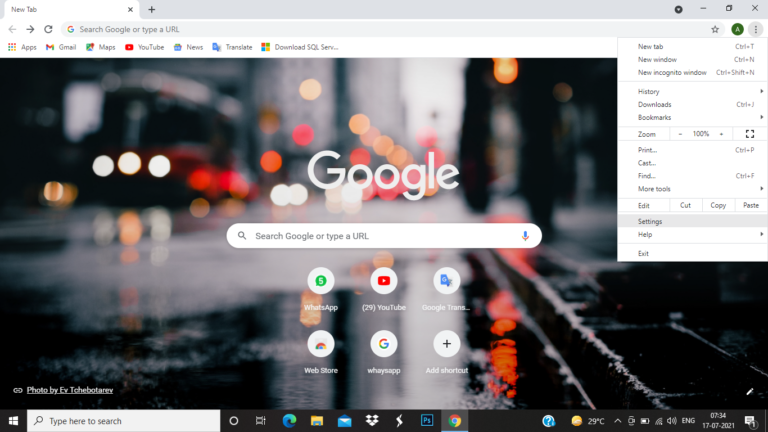Exploring the Power of ADB Shell Commands
Are you eager to learn about ADB Shell commands? If you’ve answered yes, then you’ve stumbled upon the right place. This guide is your one-way ticket to unlocking your device’s potential using ADB Shell commands.
Unfolding the Mystery of ADB Shell
In the realm of Android development and device manipulation, the Android Debug Bridge, better known as ADB, is an essential tool. ADB is an incredibly versatile command-line tool that enables direct communication between a user and their Android device or emulator. It serves as a bridge for transferring data, installing and debugging apps, and executing a wide variety of commands. At its core, ADB is the foundation of countless tweaks, modifications, and customizations that have pushed the boundaries of what’s possible with Android devices.
A key component of ADB is the ADB Shell. The ADB Shell is a Unix shell that allows you to execute commands on an Android device or emulator. It’s similar to the command prompt on Windows or terminal on Linux and macOS. This shell is instrumental in bringing the functionality of Unix commands to Android devices. From basic commands such as copying and deleting files to advanced operations like modifying system settings, the ADB Shell is a powerful utility that can significantly enhance your interaction with Android devices.

Understanding ADB Shell commands, their syntax, and usage can be quite a daunting task, especially for beginners. However, the effort pays off in terms of the unparalleled control and flexibility you get over your device. In this guide, we delve deeper into the world of ADB Shell commands, shedding light on their usage and potential, helping you transform your Android experience.
Also Read: df-dferh-01 play store error
Discovering ADB Shell Commands
ADB Shell commands are the magic words that allow you to command your Android device or emulator. Each command carries out a specific task, with the potential to drastically alter the device’s behavior, settings, or performance. It’s these commands that make ADB Shell such a potent tool for Android enthusiasts, developers, and power users.
Starting with basic device interaction commands, ADB Shell lets you manipulate your device in ways that would typically require manual intervention. For instance, the adb devices command lists all Android devices currently connected to your computer. Similarly, adb pull and adb push allow you to copy files from your device to your computer and vice versa. To install or uninstall applications, you would use the adb install and adb uninstall commands. These basic commands serve as the cornerstone of the interaction between a user and their Android device.
As you grow more comfortable with these device interaction commands, you can then explore system-level commands. These commands offer an extensive level of control, letting you tweak your device’s system settings to suit your preferences. Commands such as adb shell pm, which manages package information, and adb shell am, which handles activity and intent broadcasting, can bring about drastic changes in your device’s functionality. Whether you wish to disable a system service or broadcast an intent, system-level commands have got you covered.
If you wish to gain real-time insights into your device’s performance or status, ADB Shell also offers real-time device monitoring commands. Commands like adb logcat and adb shell top can prove instrumental in diagnosing performance issues or identifying rogue applications. With adb logcat, you can view a real-time log of system messages, while adb shell top lets you monitor your device’s CPU usage in real time.
Another powerful aspect of ADB Shell commands lies in navigating through filesystem commands. These commands are identical to their Unix counterparts, letting you navigate your device’s file system with ease. You can list all files and directories using adb shell ls, change the current directory with adb shell cd, and delete files with adb shell rm. Understanding these commands is crucial to manipulating your device’s file system effectively.
As you venture further into the world of ADB Shell commands, you’ll encounter advanced commands. These commands open the door to a new level of device control. For instance, adb shell screencap allows you to capture a screenshot, while adb shell screenrecord records your device’s screen activity. One of the most potent commands is adb shell input, which can simulate user interaction with the device. This command can perform a wide range of inputs, from simple touch gestures to complex sequences of key presses.
Device Interaction Commands
In the world of Android Debug Bridge, the device interaction commands act as a bridge between the user and their Android device. These commands help users interact with their devices seamlessly, making tasks such as copying files, installing apps, and checking device status a breeze.
Starting with the most basic interaction command, adb devices, it gives you a list of all Android devices currently connected to your computer. This command comes in handy when you’re working with multiple devices or just need to confirm that your device is correctly connected.
Next in line are the adb pull and adb push commands. These commands make file transfers between your device and computer as easy as a simple command. The adb pull command copies files from your Android device to your computer, while adb push does the opposite. These commands offer a simple, efficient way to transfer files without needing to navigate through your device’s file system manually.
The adb install and adb uninstall commands streamline the process of managing your apps. If you have an APK file on your computer, the adb install command allows you to install it on your device directly. On the other hand, the adb uninstall command lets you remove apps from your device. With these commands, app installation and removal become as simple as typing a line of text.
For real-time interaction with your device, commands like adb shell input come into play. This command simulates user inputs, such as touch, swipe, or keypress events. You can even use it to emulate complex gestures, providing a way to automate user interactions with your device.
While device interaction commands may seem basic compared to system-level commands, they are just as vital. They form the backbone of your interaction with your Android device, offering simplicity, efficiency, and power. By understanding and utilizing these commands, you can unlock a more streamlined, user-friendly Android experience.
System-Level Commands
When it comes to taking control of your Android device, system-level commands are the key. These ADB Shell commands enable you to manipulate the core system settings, services, and components of your Android device. They allow you to perform a wide range of actions, from managing package information to controlling device activities, offering you profound control over your device’s functionality.
The first of these system-level commands that you’ll likely use is adb shell pm, the package manager command. This command lets you manage your apps or ‘packages’ with a high level of granularity. For instance, you can list all installed packages, disable or enable apps, clear app data, and much more. By mastering the adb shell pm command, you can tailor the behavior of your apps to suit your exact needs and preferences.
Another invaluable system-level command is adb shell am or activity manager. This command allows you to start activities, stop services, and send broadcasts, among other things. With this command, you can start any activity of an app, stop a running service, or even simulate the broadcast of an Android system intent.
Other powerful system-level commands include adb shell dumpsys and adb shell dumpstate. These commands provide comprehensive details about your device’s status, allowing you to diagnose issues or get insights into your device’s health. adb shell dumpsys provides information about device’s system services, whereas adb shell dumpstate gives a full dump of the device’s system state.
System-level commands are not just about control; they also help enhance your device’s security. For instance, adb shell setprop command allows you to modify system properties. This command can be used to enhance your device’s security by modifying various system properties.
While system-level commands grant substantial control over your device, they also come with their risks. These commands have the power to alter the functionality of your device drastically, and improper use can lead to unwanted outcomes. It’s always crucial to understand what a command does before executing it. As the saying goes, “With great power comes great responsibility.”
Real-Time Device Monitoring Commands
In the dynamic ecosystem of Android, things are always moving and changing. To keep tabs on what’s happening beneath the surface, real-time device monitoring commands play an instrumental role. These ADB Shell commands provide live insights into your device’s performance, helping you diagnose problems, optimize performance, and maintain the overall health of your device.
The adb logcat command is your go-to tool for accessing real-time logs of system messages. This command fetches an ongoing stream of log data, including system messages, app behavior logs, and debugging information. Whether you’re an app developer debugging your application or a power user trying to identify a problematic app, adb logcat is your window into the intricate workings of your device.
For those keen on understanding their device’s resource utilization, adb shell top provides live monitoring of your device’s CPU usage. With this command, you can observe how your device’s processor is utilized by various processes and apps. This information is particularly useful when you’re optimizing an app’s performance or trying to identify a resource-hogging app.
Besides these, adb shell dumpsys and adb shell dumpstate also provide real-time monitoring, offering a comprehensive picture of your device’s state and its numerous services. Whether it’s checking the status of your Wi-Fi, monitoring your battery usage, or understanding your device’s memory utilization, these commands have got you covered.
Navigating through Filesystem Commands
Managing your device’s files and directories is a core aspect of device control and manipulation. Navigating through filesystem commands makes this task straightforward, allowing you to traverse your device’s file system with ease, similar to how you would on a Unix-based system.
The adb shell ls command lists all files and directories in your current location in the file system. If you’re searching for a particular file or trying to understand your directory’s structure, this command is your first step.
To change your current directory, adb shell cd lets you move around your device’s file system. Whether you need to access a deeply nested directory or go back to the root directory, this command is your vehicle.
The adb shell rm command enables you to delete files or directories from your device’s file system. Whether it’s a temporary file consuming unnecessary space or an outdated directory, this command allows you to keep your file system clean and organized.
Delving into the Nitty-Gritty: Advanced Commands
Beyond the standard commands for device interaction, system-level control, real-time monitoring, and file system navigation, ADB Shell commands offer a suite of advanced commands. These commands unlock higher-level functionalities, offering you control over intricate aspects of your device.
One such advanced command is adb shell screencap, which allows you to capture a screenshot of your device’s current screen and save it to a specified location. Whether you’re documenting a user flow in your app or capturing an on-screen configuration, this command is a handy tool.
The adb shell screenrecord command takes this a step further, enabling you to record your device’s screen activity. This command is perfect for creating instructional videos, recording app interactions, or documenting unusual device behavior.
Lastly, the adb shell input command is a versatile tool for simulating user inputs. It can generate touch events, swipes, keypresses, and more, mimicking user interaction with the device. This command can prove invaluable in automated testing, where it can replicate a user’s interaction pattern without any manual intervention.
While these advanced commands offer a high level of control, they require careful usage. A thorough understanding of their functionality and implications is crucial to using them effectively and responsibly. Each of these advanced commands has the potential to transform your Android experience, providing you with enhanced control, flexibility, and understanding of your device.
Table of commonly used ADB Shell commands and their functions:
| ADB Shell Command | Function |
| adb devices | Lists all connected devices |
| adb pull [path to file on device] [path on PC] | Copies a file from the device to the PC |
| adb push [path to file on PC] [path on device] | Copies a file from the PC to the device |
| adb install [path to .apk file] | Installs an application on the device |
| adb uninstall [package name] | Uninstalls an application from the device |
| adb shell dumpsys | Provides comprehensive information about device’s status |
| adb shell pm list packages | Lists all packages (apps) installed on the device |
| adb shell am start -n [package name]/[activity name] | Starts an activity specified by the package and activity name |
| adb logcat | Displays a real-time log of system messages |
| adb shell top | Monitors device’s CPU usage in real time |
| adb shell cd [directory] | Changes current directory in the device’s file system |
| adb shell ls | Lists all files and directories in the current directory on the device |
| adb shell rm [file or directory] | Deletes a file or directory on the device |
| adb shell screencap [path on device] | Captures a screenshot and saves it to the specified path on the device |
| adb shell screenrecord [path on device] | Records screen activity and saves it to the specified path on the device |
| adb shell input [event] | Simulates user input events like touch, swipe, key press, etc. |
Remember to replace the […] placeholders with actual values as per your requirements.
Conclusion
To summarize, ADB Shell commands are powerful tools that allow extensive control over your Android device. From basic device interaction, system modification, and real-time monitoring, to navigating the filesystem and performing advanced tasks, ADB Shell has a command for virtually any task.
The possibilities with ADB Shell commands are almost endless. It’s up to you to explore, experiment, and harness this power. Always remember: with great power comes great responsibility. Use these commands wisely tounlock the full potential of your Android device, while also ensuring its safety and integrity.
By understanding and using ADB Shell commands, you’re stepping into a broader world of Android exploration. It might seem a bit intimidating initially, but with practice, you’ll find that ADB Shell commands are a valuable addition to your Android toolbox.
Note: This guide serves as a beginner-friendly introduction to ADB Shell commands. Each command has multiple parameters and options that offer greater control and functionality. For more in-depth information, refer to the official Android documentation.
So, what are you waiting for? Dive into the world of ADB Shell commands and unlock the true capabilities of your Android device. Happy exploring!
FAQs
ADB Shell commands are instructions you give to your Android device or emulator through the Android Debug Bridge (ADB).
First, you need to set up ADB on your computer. Once done, connect your Android device and start executing commands.
If used incorrectly, some commands can cause system instability. Always double-check commands and their potential impact.
Yes, you can control your Android device remotely using ADB over TCP/IP, provided both devices are on the same network.
adb devices is a command that lists all Android devices currently connected to your computer.



